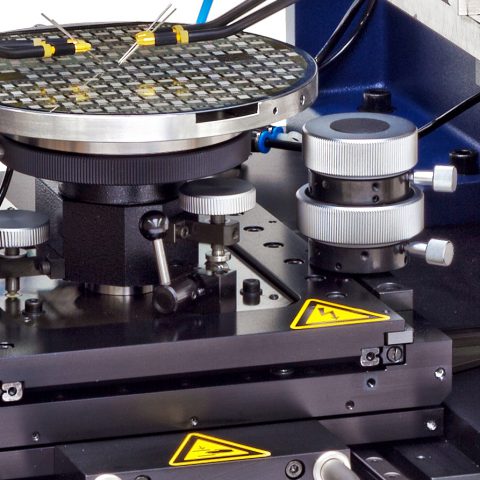Numerous technologies, such as radar, imaging and spectroscopy, require the generation of signals that range into the millimeter-wave (mmW) region and beyond into the terahertz range. For improved commercialization, researchers are actively developing RF circuitry using CMOS process technology, where substantial size and cost benefits can be realized.
Dr. Omeed Momeni, a member of the faculty of the Electrical and Computer Engineering Department at University of California, Davis, and his colleagues at the University of California Davis are one of these groups of researchers. Their long-term goal is to push CMOS-based circuitry to its theoretical limits in the 700 GHz range. In pursuit of this vision, they describe the design of a voltage-controlled oscillator (VCO) targeted at a 130 nm BiCMOS process. In a paper delivered at the 2016 International Solid State Conference, Dr. Momeni and his colleague Rouzbeh Kananizadeh reported successful operation of this on-chip VCO at frequencies up to 190 GHz with a tuning range of 20.7% and a maximum power output of -2.1 dBm.
To verify this circuit, they assembled a test and measurement system that included one of our 150 mm probe stations to contact the on-chip output pads connected to the VCO circuitry. The EPS150RF probe station’s compact architecture occupied a minimum of valuable lab space, and we helped minimized the team’s startup time by completing the initial system assembly.
The fabricated VCO circuit was delivered to the lab in the form of individual die each containing a single copy of the circuit. Consequently, Dr. Momeni’s team configured the EPS150RF for probing by mounting each die on its own board, which was then vacuum-sealed onto the probe station’s chuck for probing operations. Each board included wire bonding to deliver various DC voltages and ground connections to the chip, which also contained two additional pads that were probed to capture the VCO’s output.
The RF output frequencies of the VCO required exceptional probe performance to deliver accurate, repeatable results, and we met this challenge with our Infinity Probe®, which delivers accurate and dependable results into the 500 GHz range. It minimizes probe loss while substantially reducing unwanted coupling and transmission modes.
In this particular application, the Infinity Probe’s waveguide was coupled with a harmonic mixer to complete the signal path to a spectrum analyzer, which conducted the frequency measurements. It verified a tuning range of 20.7% at a center frequency of 190.5 GHz.
The power output of the VCO was verified with a similar probe setup which created a signal path from the chip’s output pads to a power meter. In this case, a waveguide attachment with a 90 degree E-bend helped position the Infinity Probe in acceptable physical proximity to the power meter. It verified a maximum output power of -2.1 dBm. In all cases, EPS150RF and its Infinity Probe provided the low, stable contact resistance required for consistent, accurate measurements at the RF frequencies produced by the VCO.
For Dr. Momeni and his colleague on this project, Rouzbeh Kananizadeh, the successful fabrication and operation of this BiCMOS circuit represents a significant performance milestone in progress toward the integration of RF circuitry onto relatively low-cost semiconductors.
